Over the past 10 to 15 years, the cuisine of Spain has experienced a meteoric rise in the global ranks. Among the peninsula’s most popular culinary exports has been the wide range of traditional charcuterie; from chorizo and lomo to jamón of endless varieties, Spain is definitely a country that embraced all parts of the pig long before America’s recent “whole hog” craze
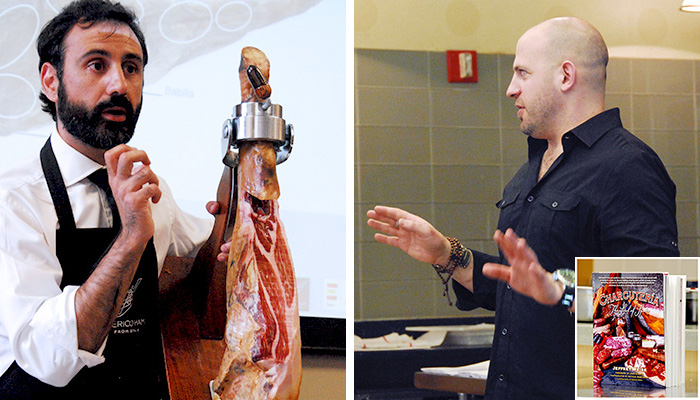
To initiate students into the wide range of Spanish charcuterie, ICE invited Chef Jeffrey Weiss to speak about his new book, Charcutería: The Soul of Spain—the first exhaustive work on the subject to be written in the English language. While Jeffrey is an accomplished chef in his own right, he spent years in Spain as a student, specifically tracking down authentic regional techniques for sausages, pâtés and cured meats from across the country. Traditions are usually passed down from grandmother to granddaughter, eschewing modern machinery and automation for foods made by hand with simple tools.
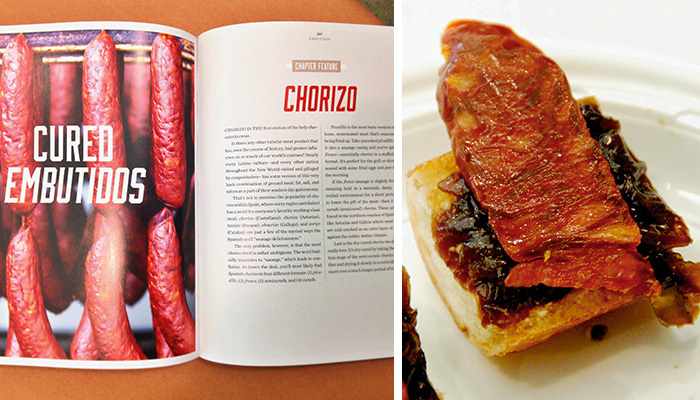
In this style of charcuterie, every part of the animal is used after slaughter. Blood is used as a thickener in a variety of different morcilla (blood sausage) recipes. Innards are cleaned and used as natural casings for everything from fresh sausage to dried chorizo. Even the pig’s head is roasted and cleaned for rich terrines.
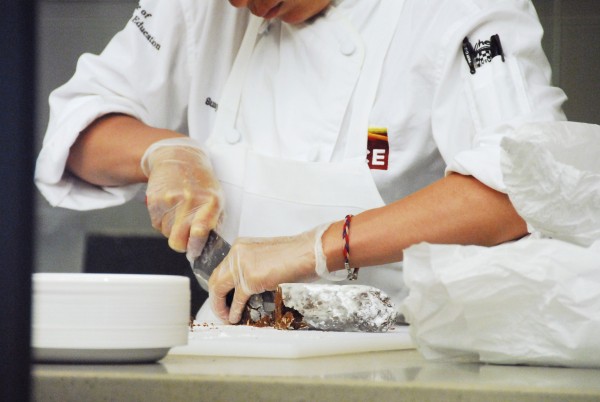
To demonstrate a memorable bite that Chef Jeffrey enjoyed often in Spain, he chose to serve the audience a bocadillo—a small sandwich often served in bars. His version featured soft goat cheese, creamy caramelized onions and beautifully fatty Pamplona-style chorizo. He also served a playfully-worded salchichoc, or “chocolate sausage.” While we were somewhat grateful this didn’t combine pork with chocolate, the dish resembled a chocolate truffle studded with dried fruits and nuts that, when rolled in powdered sugar, looked like a chorizo. While the Spanish may take their charcuterie traditions seriously, they still enjoy a bit of humor in naming their dishes.
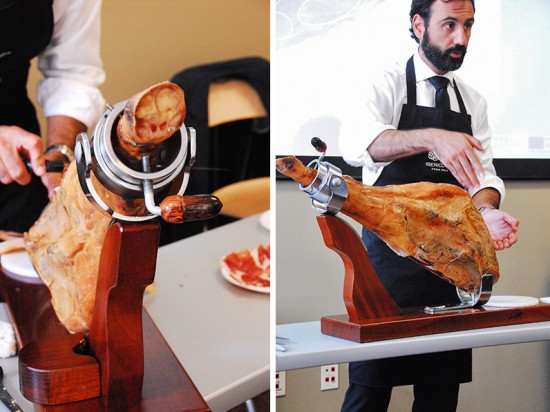
In the same week, students were treated to a demonstration on carving jamón ibérico by Master Carver Mario Hiraldo Regalado of Foods from Spain. Possibly the single-most revered Spanish culinary delicacy, jamón ibérico is the cured and dried back leg of the black ibérico pig. To protect the traditional methods of making this jamón, laws require about two acres of land per single animal, providing each pig competition-free access to buttery acorns and wild herbs. Their free-range lifestyle and natural, seasonal diet flavors the ham, especially the precious creamy fat. Fetching more than $100 a pound in most shops, the resulting product is a true culinary indulgence. Carving a whole leg of ibérico is an art unto itself and students were mesmerized by Regalado’s enviable technique.
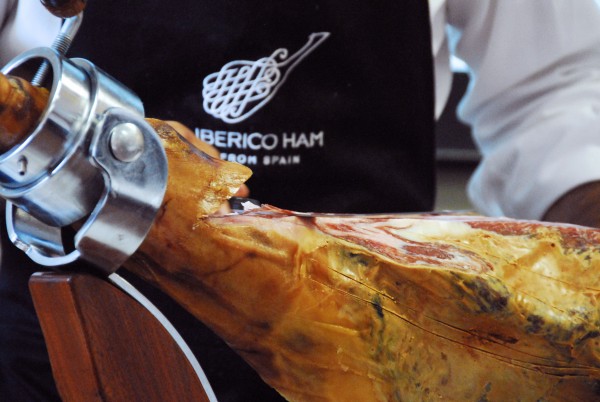
Jamón ibérico producers use methods and techniques that have been proven over generations, ensuring that the meat takes on the sweet and woodsy quality appreciated around the world. Mario described the different flavors evident in the ham as an oenophile would discuss those found in a glass of wine, finding hazelnut, thyme, even red fruits. Similar to how grapes reflect the terroir of the area in which they were grown, the ibérico pigs taste of the Spanish countryside—the environment they spend their entire lives wandering around is deeply rooted in their anatomy. By serving the audience paper-thin slices of ham from 3 distinct parts of the leg, Mario also invited them to compare the different flavors, evident even in the same animal.
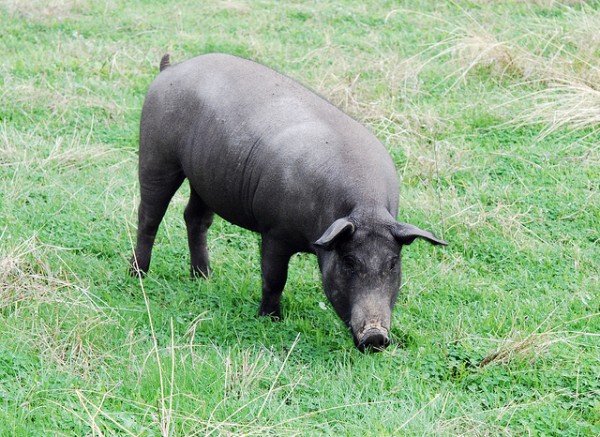
We were lucky to have Jeff and Mario at ICE within the same week: each professional's perspective compounded upon the other, providing further insight on a topic not widely known to American audiences. While they both showcased unique presentations, guests surely walked away from each with a newfound appreciation of the art of Spanish charcutería, respect for the culture surrounding its preparation, and a sense that—despite an increasingly modernized world—there are still those who value a deep connection to the earth and who take time to uphold the beautiful traditions of long ago.
Charcutería is only one fascinating aspect of Spanish cuisine and we encourage our students to explore further! Discover more Spanish flavors at ICE with our upcoming “Croquettes and Cava” workshop with ICE alum and Executive Chef of Casa Mono, Anthony Sasso.




